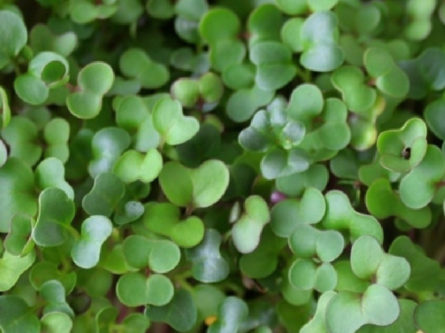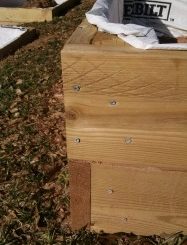A Delicious Dozen; Top Choice Microgreens
In our area of the southeastern United States, it sometimes seems like there is a narrow window during the warmer seasons where leaf vegetables transform instantly from tender and delicious to tough and bolted. We are often faced with having to harvest, eat, freeze (meh) or give away quite a lot in a short period of time or lose a lot of them. Growing them as microgreens allows us to have a more constant and controlled source. Microgreens are also ideal for folks with limited space and take very little skill or supplies. But what to grow? The following are some favorites from our garden and gardens of friends.
 Arugula
Arugula
Grows quickly and develops more flavor than you’d think from a young plant. In under 10 days, you have either the base of a micro-green dish, or something to add a spicy zing to a larger dish. Good source of vitamin C and potassium.
Bok Choy
A mainstay of many familiar Asian dishes, both the green and red varieties do well as a microgreen. The slightly sweet taste of the young plant before it starts to mature is a nice contrast or complement to the spicier microgreens.

Cress
A little slower to mature than arugula, cress pays off with an even spicier and tender result, which makes sense when you realize it is a relative of true mustard. When fresh it is a substantial source of vitamins A, C and K.

Onion
Milder than the mature plant, they still have enough character to add that onion flavor to any dish to anything.
Kale
One of the most infamous plants in our garden for bolting fast and early, kale is a prime microgreen candidate. The purple variety adds color as well as flavor to dishes, and all varieties are a good source of iron and vitamins A & C.

Kohlrabi
With a crisp texture and flavor reminiscent of a mild cabbage or broccoli as it matures, kohlrabi isn’t a favorite with everyone but I like it. Rich in vitamin C. Good as a salad base or sandwich lettuce substitute.

Mesclun
Not a single plant, but a mix like chervil, arugula, dandelions and endive (and that is just for starters). Think of it as “instant salad mix”. A great choice for someone that wants to try a bunch of things until they figure out what they like. You can get pre-made mixed seed packets or create your own blend.

Radish
Even if you don’t like mature radish, it makes an ideal microgreen for beginners; fast growing and hard to kill. The radish flavor is much milder and used sparingly ads a great flavor accent.

Red Beet
Another plant you might not like as a mature plant, but might surprise you as a microgreen. The red adds a nice visual flourish to whatever you use it in.

Sorrel
Slow maturing by microgreen standards, sorrel has a sharp, tangy flavor not found in many other microgreens. It is rich in vitamin C and also contains vitamin A, vitamin B-6, iron, magnesium, potassium, and calcium.

Sweet Basil
A usual suspect in herb gardens, sweet basil also makes a great microgreen. Not as easy to grow as some other microgreens, but worth a try if you don’t have the opportunity or inclination to grow it as a mature plant.

Swiss Chard
Another “bolts too quickly” offender in our hot weather gardens, Swiss chard leaves (avoid the stems) is a colorful, healthy and tasty microgreen choice.
Other Plants to Try as Microgreens
A few others I’d like to try or hear about, if you have tried:
- Amaranth
- Broccoli
- Buckwheat
- Chia
- Mizuna
- Sunflower










